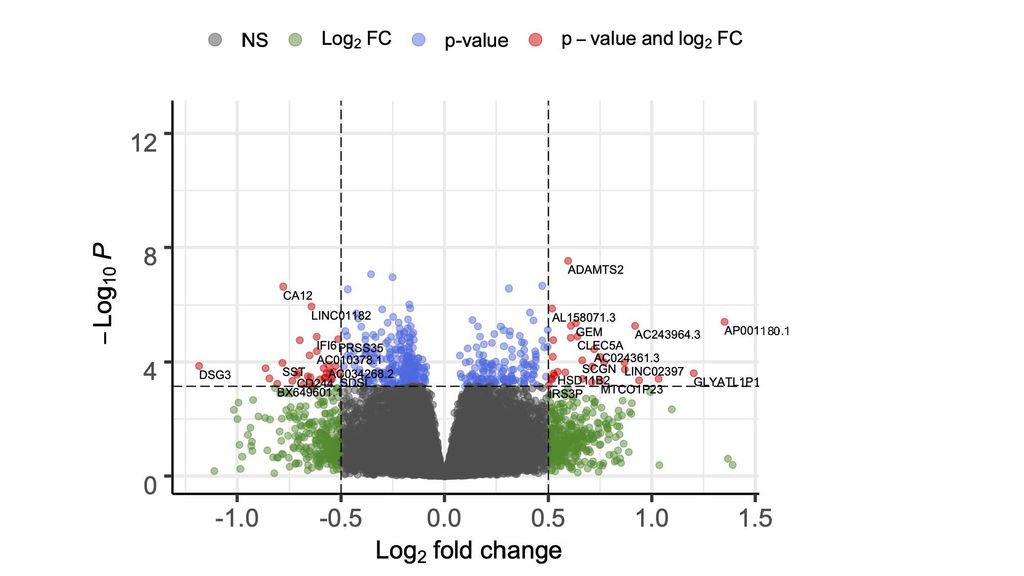First Large-Scale Alzheimer Disease Study in Brain Tissue from African American Donors Implicates Roles for Many Novel Genes
Research
First Large-Scale Alzheimer Disease Study in Brain Tissue from African American Donors Implicates Roles for Many Novel Genes
The prevalence of Alzheimer disease (AD) is approximately two times higher in African Americans (AA) compared to White/European-ancestry (EA) individuals living in the U.S. Some of this is due to social determinants of health such as disparities in health care access and quality of education, biases in testing and higher rates of AD risk factors such as cardiovascular disease and diabetes in those who identify as African American.
Although many studies have examined differences in gene expression (measure of the amount of protein encoded by a gene) in brain tissue from AD cases and controls in EA or mixed ancestry cohorts, the number of AA individuals in these studies was unspecified or too small to identify significant findings within this group alone.
In the largest AD study conducted in brain tissue from AA donors, researchers from Boston University Chobanian & Avedisian School of Medicine have identified many genes, a large portion of which had not previously been implicated in AD by other genetic studies, to be significantly more or less active in tissue from AD cases compared to controls. The most notable finding was a 1.5 fold higher level of expression of the ADAMTS2 gene in brain tissue from those with autopsy-confirmed AD.
Using solicited specimens from 14 NIH-funded AD Research Centers across the country, the researchers generated and evaluated gene expression data derived from post-mortem prefrontal cortex tissue from 207 AA brain donors (125 pathologically confirmed AD cases and 82 controls). They found the most significantly differentially expressed gene, ADAMTS2, was also the top-ranked gene in an independent study conducted by the same research team in brain tissue from a much larger sample of EA individuals. In that study, they compared gene expression in brain tissue from pathologically confirmed AD cases who had clinical symptoms of AD prior to death with similarly pathologically diagnosed AD cases who were cognitively resilient.
 Volcano plot of a transcriptome-wide differential gene expression analysis of 125 neuropathologically determined African American AD cases and 82 neuropathologically determined African American controls. Color-coding denotes genes that passed multiple testing corrected significance thresholds (blue dots), log2 fold change > |0.5| (green dots), or both (red dots).
Volcano plot of a transcriptome-wide differential gene expression analysis of 125 neuropathologically determined African American AD cases and 82 neuropathologically determined African American controls. Color-coding denotes genes that passed multiple testing corrected significance thresholds (blue dots), log2 fold change > |0.5| (green dots), or both (red dots).
“To our knowledge, this is the first time in similarly designed AD genetics studies that the most significant finding was the same in both white and African Americans,” said corresponding author Lindsay A. Farrer, PhD, chief of biomedical genetics at the school.
 Lindsay Farrer, PhD
Lindsay Farrer, PhDAccording to the researchers, this study is an important step in deciphering the genetic architecture and underlying mechanisms of AD risk in African Americans, considering evidence that nearly all the established AD risk variants are population-specific or have divergent frequencies across populations. “Although risk of AD in African Americans has been associated with variants in several genes, the overlap of genes showing association in in EA populations is modest, and even among the overlapping genes the particular variants involved and the size of the effect on AD risk usually differ,” explains Farrer. “The fact that expression of ADAMTS2 is significantly and substantially higher in brain tissue from both Whites and Blacks with AD not only points to a shared biological process leading to AD, but also elevates the priority of further research involving this gene which could determine its suitability as a potential therapeutic target.”
These findings appear online in Alzheimer’s & Dementia: The Journal of the Alzheimer’s Association.